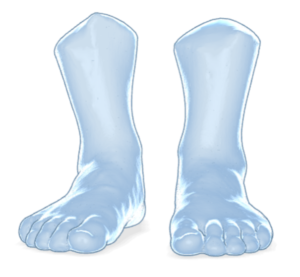3D Scanners and Custom Orthotics
Traditionally custom orthotics were made using a plaster slipper cast technique. This involved using wet plaster to mold the shape of a person’s foot and then using the mold (slipper cast) to create a replica of the patient’s foot which was then used to make the orthotic. As time went on, the Foam Box technique became more popular which involved a practitioner positioning the foot in a particular way and then pushing the patient’s foot into a foam box which would create an imprint of the patient’s foot. Both techniques are used by orthotists and podiatrists today however, 3D scanning has started to become more and more popular.
Benefits of 3D Scanning
While 3D scanning and printing are newer technologies, further development has allowed it to become more widespread in the creation of orthotics. As this is a relatively new method, research is limited and there is no consensus when comparing the various methods. Anecdotally, 3D scanning is significantly quicker, more efficient, and less prone to error. The scans we take can capture the most subtle differences in the architecture of a patient’s foot down to the location of superficial veins on their feet. There is a significant decrease in delay in ordering the orthotics, and risk of misplacing an order or having it lost in transition is minimal. It is also more environmentally friendly as everything is digital which allows us to greatly reduces our carbon footprint. All while maintaining the same accurate measurements.
The Process:
The ARIZE 3D Scanner allows us to take the most accurate digital scan of the feet and ankles and design your orthotics with you. With the accompanying program, we can add a myriad of customization options that will assist in compensating for deformities and relieving pain down to the millimeter and degree. During your visit we can show you what your orthotic device will look like and answer any questions you might have about what different additions will do for you. The scans are then sent to the manufacturer and your devices are 3D printed and delivered back to the office within 1-2 weeks.
This has become a powerful tool in our practice that allows us to provide premium orthotics that greatly benefits our patients. Of course, orthotics are only good as the physical and biomechanical exam that precedes them. If you are having foot pain such as heel pain, arch pain , ankle sprains and pain in the ball of the foot that will benefit from orthotics, please don’t hesitate to make an appointment!
Written by Dr. Gavin Tsuchida
Dr. Tsuchida recently moved to San Diego from New York and is enjoying the beach and hiking when he’s not providing thoughtful, personalized care for his patients.


